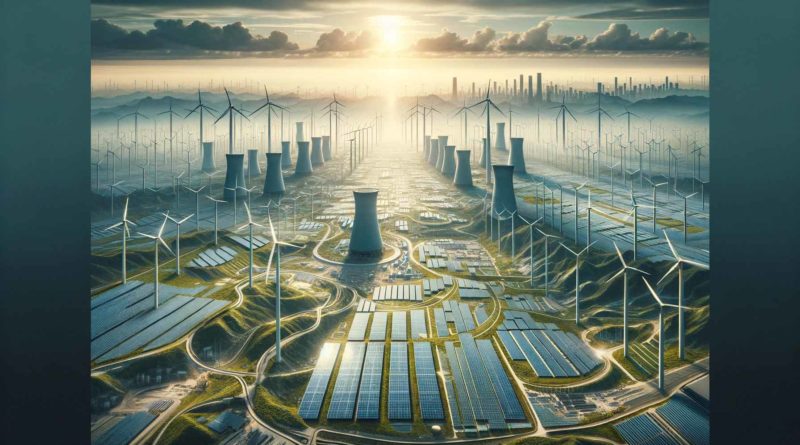The Green Leap Forward: China’s Transition from Coal to Renewable Energy
China, a paradoxical giant in both coal production and renewable energy advancements, is on the brink of a monumental shift. As indicated by a prominent industry association’s yearly insights, the nation is poised to see its solar and wind energy capacities eclipse coal, marking a historic transformation in its energy paradigm.
Forecasts pinpoint that by the close of this year, the combined might of solar and wind energy will contribute to roughly 40% of China’s total installed capacity, overshadowing coal’s 37%. This shift is not just a numerical feat but also a substantial economic force, injecting a staggering 11.4 trillion yuan ($1.6 trillion) into the country’s economy in 2023 alone. This injection is not merely an addition but a dominant force, driving investment and economic expansion more than any other sector.
This pivot towards renewable sources is not a sudden leap but a steady climb. Previously, solar and wind sources represented about 36% of the nation’s energy capacity, closely tailing coal, which stood just shy of 40%. However, the trajectory is clear and unwavering: a sustained increase in renewable energy capacity is set to comfortably meet, and potentially surpass, the growing electricity demands of the nation post-2024. Such a trend hints at a prolonged decline in fossil fuel reliance and, consequently, a downturn in emissions.
A testament to this renewable surge is the nation’s ambitious stride in solar and wind capacity development. By year-end, China is anticipated to have constructed approximately 1,300 gigawatts (GW) of solar and wind infrastructure, overshooting its 2030 goal well ahead of schedule.
This surge in low-carbon energy isn’t just about meeting electricity demands; it’s reshaping the industry’s landscape. The rate of green energy adoption is not just keeping pace with but exceeding the annual rise in electricity consumption, a trend further bolstered by a booming manufacturing sector geared towards renewable technologies.
For the first time, China’s holistic embrace of renewable energy sources, encompassing solar, wind, hydropower, and nuclear, has crossed the halfway mark, accounting for over 50% of its total energy capacity. This shift is occurring against a backdrop of a predicted 6% increase in electricity consumption in 2024, a slight deceleration from the previous year’s 6.7%.
Parallel to this energy transition is the robust growth of China’s electric vehicle (EV) sector. Witnessing a remarkable 36% year-on-year surge, with EVs constituting 32% of the total vehicle production, the nation is rapidly cementing its stake in the global clean-energy transition. This burgeoning sector is not just reshaping domestic markets but also prompting global policymakers to rethink their climate strategies and industrial growth paradigms in relation to China’s green leap forward.
Disclaimer:
While extensive efforts have been made to ensure the accuracy of the information in this article, it is important to note that the field of energy and technology is continually evolving. Readers are encouraged to seek additional, up-to-date sources to gain a comprehensive understanding of the ongoing developments in China’s energy sector and its implications for the global environment and economy.





